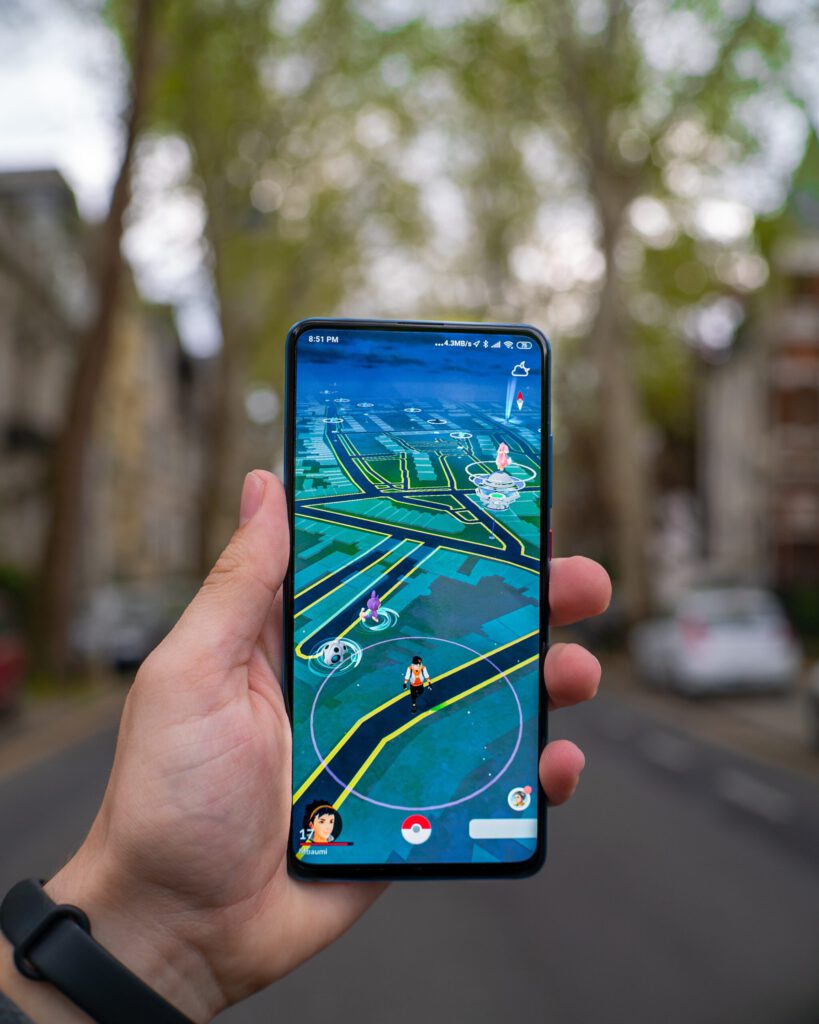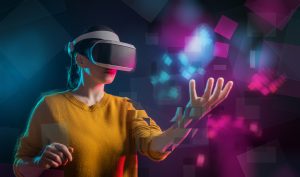Technological advancements, whether it be mobile social media or virtual and augmented reality, can be intimidating. However, they are not about to slow down and technology is on its way to taking more and more space in our lives every single day. To stop technology from overtaking us, developing new methodologies to measure its impact on human behavior is crucial. This is the reason why the DigitAS project was born.
The DigitAS project, funded by the Austrian Academy of Sciences, develops, tests, triangulates, and compares digital, bio-sensing, and qualitative methodologies for researching the effects of humans’ engagement with the digital sphere on their subconscious affective and conscious emotional experiences of space since 2019. Researchers Tabea Bork-Hüffer, Katja Kaufmann, Niklas Gudowsky-Blatakes and Martin Rutzinger along with Magnus Bremer, Andreas Kollert, Veit Baade, Jacqueline Kowalski, Jan Misera and Johannes Melchert have come together to focus on method development in the Digital Humanities context.
Merging physical and digital outdoor spaces
Over the last decades, the internet became the largest information-sharing platform in the world. Initially only available via Wi-Fi connections, accessing online content was only possible in fixed locations, for expensive prices. However, as the years went by, the price of information reduced before the most radical change occurred: data accessible to all. Having data on your smartphone means that you can access information everywhere at any time, even in outdoor spaces. Several other functionalities came with the development of smartphones such as high-quality cameras and the reduction of the weight of the device. The combination of these factors have made smartphones easy to carry around, and pushed individuals to record their environments, as well as research information online while on-site.
However, more recently, technological breakthroughs have accelerated the merger of these technologies. The arrival of Augmented reality on devices available to all such as smartphones, smartwatches, and smart glasses have blurred the lines between both worlds. Individuals can see virtual content in a real-world space perfectly aligned in such a way that the convergence of the images looks real.
How does this impact people’s perception of outdoor spaces?
Inevitably, the way that individuals perceive and interact with outdoor spaces has been altered. Firstly, the availability of augmented reality and constant contact with technological devices has changed the feeling of privacy and exposure. Shared location via mobile devices makes individuals feel observed and tracked, as well as offering them a more tailored experience. This conflicting feeling increases confusion, as most individuals dislike being tracked, yet enjoy the benefits of content based on location. Secondly, having omnipresent information triggering comparing our experience to others and being exposed to others’ opinions interfere with developing our individual feelings about a certain place, or object. Prejudice and judgments are formed in the brain before constructing our own opinion based on experience.
New methodologies
As augmented reality technologies constantly develop and improve, the challenge arises for research to keep up with its pace. Thus, there is a large methodological gap in the research. The DigitAS project follows a research design that integrates established representational qualitative methodologies with more-than-representational mobile eye-tracking in a quasi-experimental field study.

The researchers opted for a combination of complex mobile and mixed-methods research methods. The results of the quasi-experimental study described below showed that combining those research methods lead to a possible comparison of actual social media content about parks and the communicated opinion with in-situ perceptions. As well as this, the subjective reaction to the parks and social media content was recorded in retrospective interviews, while comparing it to the attention and interest shown by the participant through mobile eye-tracking.
The DigitAS project – Quasi-experiment case study
The study took place in two Austrian parks, following three defined steps. The first step was to ask participants to narrate their experience walking around the park while not having access to any technological device. Secondly, participants were asked to walk the same route accompanied by a mobile device, which regularly sent participants digital messages about the area they were in. For instance, tweets, Instagram posts, or youtube videos were shared with them conveying negative or positive feedback from previous visitors about the area. Finally, they were asked to recall their experience and give feedback on the difference between both walks, as well as the impact they judge the mobile device had.

All the data from participants were recorded using mobile eye-tracking, which was then analyzed in the iMotions software.
The overall finding of this study was that, after analysis, more positive social media content was found about the two parks in question. However, while exposed to this content in the park, participants reflected more upon the negative comments which captured their attention more, trackable using the eye-tracking data. Some participants experienced higher stress levels receiving social media content which hindered their originally positive experience of the park.
The larger research field of the impact of technology on human behavior and perception is one that we at iMotions strive to discover. The DigitAS project as a whole includes several research objectives addressed in different papers. If you would like to find out more, visit the project page DigitAS.
Free 52-page Human Behavior Guide
For Beginners and Intermediates
- Get accessible and comprehensive walkthrough
- Valuable human behavior research insight
- Learn how to take your research to the next level












